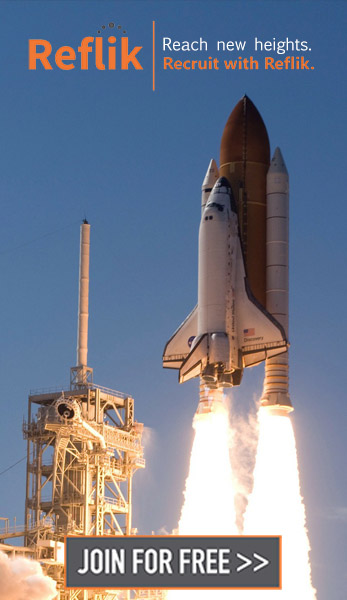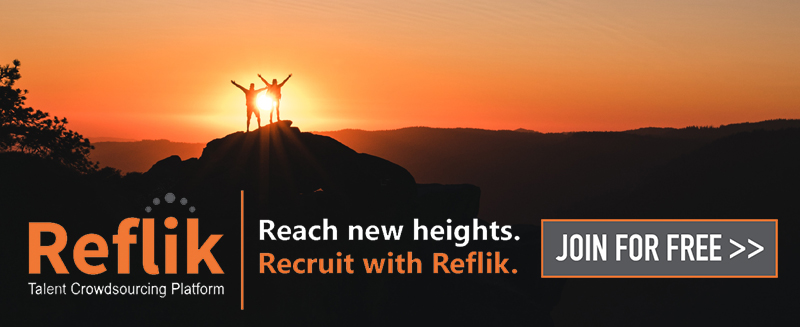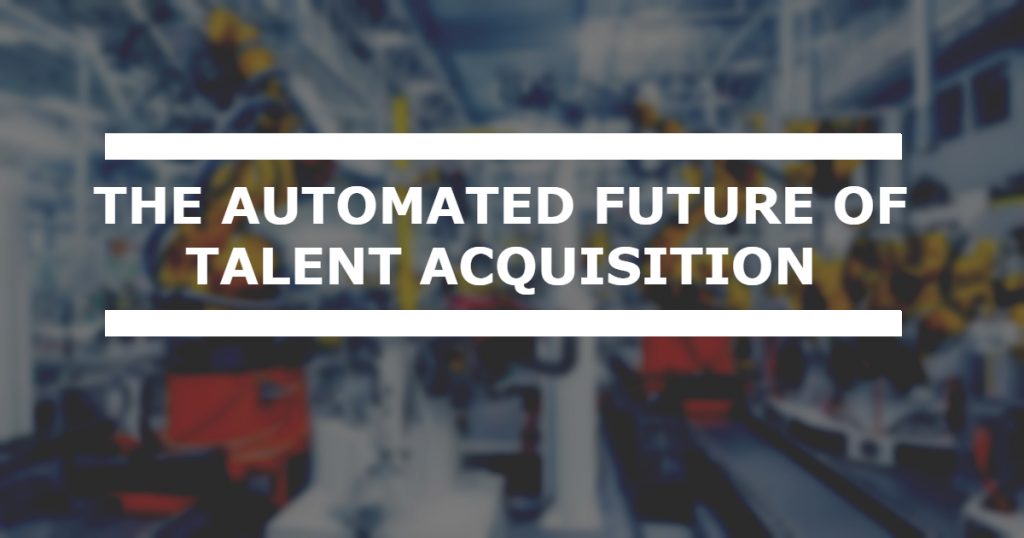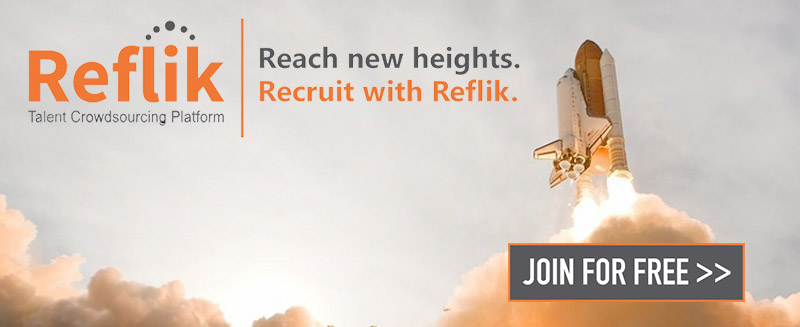Talent Acquisition is the process of attracting, acquiring, and retaining candidates whose skills, experiences, and personalities suit the needs of an organization. Talent Acquisition has become more global and structured over time. Current trends in Talent Acquisition suggest that, going forward, Talent Acquisition will become more cost-effective, efficient, and quicker with the development of automated Talent Acquisition technologies and services.
In this blog post, we will cover:
- The History and Evolution of Talent Acquisition
- The Talent Acquisition Process
- The Future of Talent Acquisition
The History and Evolution of Talent Acquisition: Overcoming Geographic Limitations
According to Christina Thompson of Quantum Workplace, “As far back as the days of Ancient Rome, historians can identify examples of recruiting, offers, even employer brand building.”
She says that around 55 B.C., the Roman Emperor, Julius Caesar, was one of the first to revolutionize talent acquisition by doing away with the system of class qualifications and instead created a referral-based system. She goes on to give a couple of other examples. In the 10th century, technical assessments came about when the Sung Dynasty used entrance exams to qualify prospective civil servants. In the early 1900s, the first job advertisement in Western History was placed in the London Times by Earnest Shackleton. Certainly, the Industrial Revolution of the 1700s created a trend in talent acquisition toward people who could operate machinery and mechanical devices, thus making the process of finding those with specific technical education a part of talent acquisition.
Caesar’s referral system, the Sung Dynasty’s assessments, and the post-Industrial Revolution economy’s reliance on technicians set the pace for modern Talent Acquisition. They began tackling challenges that would come to define the Talent Acquisition space:
- Figuring out the technical and “soft” skills employees should have.
- Finding these people.
- Bringing them up to speed
- Keeping them within the organization for as long as possible.
Despite these innovations in the early days of Talent Acquisition, challenges and limitations remained. For most part, the part of Talent Acquisition that involves hiring good people (reccruiting) was limited by geography. Earnest Shackleton’s newspaper advertisements may have been seen by the entirety of London, but he still did not have the attention of large swaths of populations outside of London. Post-Industrial Europe, Rome under Julius Caesar, and even the Sung Dynasty were limited by geography.
Fast forward to the twentieth century, when there was an explosion of advancement sparked by the beginning of the Digital Revolution. 
The Digital Revolution produced the internet and world wide web, connecting humans on a global scale and enabling quick data transfers. With the advent of search engines and social media geared toward connecting talented individuals with employers, a whole world of possibilities opened up for Talent Acquisition practitioners.
With the help of digital technology, Talent Acquisition professionals have overcome geographic limitations with the help of job boards and professional social networks. Talent Acquisition is no longer limited to one local area as it once was. Technology has given employers dynamic access to candidates. They can now find local and non-local candidates as well as highly-specialized candidates or generalists in a very efficient manner.
The Talent Acquisition Process: Bringing Structure to Talent Acquisition
As Talent Acquisition became more global, the process of attracting, acquiring, and retaining the right talent has become more structured. Let’s look at how, exactly, talent acquisition is done today. According to Laurie McIntosh of the Society for Human Resources Management (SHRM) the process of talent acquisition today has four key steps: workforce planning, recruitment, onboarding, and retention.
Workforce planning
 Workforce planning, as defined by McIntosh, “is the process an organization uses to analyze its workforce and determine the steps it must take to prepare for future staffing needs.”
Workforce planning, as defined by McIntosh, “is the process an organization uses to analyze its workforce and determine the steps it must take to prepare for future staffing needs.”
Talent Acquisition experts agree on the general way to plan your workforce but there is no general consensus on the specifics around it. This is because workforce planning must be tailored to a business’s particular requirements and needs.
Every company must follow a four-step workforce planning process:
- Supply Analysis – Does your organization have the supply internally to meet its demand?
- Demand Analysis – What are your organization’s current and future workforce requirements?
- Gap Analysis – What is holding your organization back? What is the gap between your current state and your future state?
- Solution Analysis – How you address your gaps in current and future staffing needs?
Most management consulting firms – such as Boston Consulting Group – have dedicated departments focused on helping clients with workforce planning. They try to understand your goals (demand analysis), figure out what is holding you back (gap analysis) and finally recommend steps to get there (solution analysis).
Alternatively, advances in predictive analytics and modeling technology have allowed companies to do the analysis necessary to make data-driven decisions around short-term and long-term staffing goals, whether those goals can be accomplished by internal means, what is holding them back, and how to overcome it.
Recruiting

Then there is the subject of recruiting or the process of sourcing, screening and hiring talent. It can be done internally and externally. Typically a company’s human resources department recruits new employees. This process can be very cost-effective but can consume a significant amount of other resources, namely time, employee’s salaries, opportunity cost, and administrative burden. Some companies recruit externally by hiring a recruitment vendor.
Both options have substantial pros and cons. The pros and cons of each recruiting option must be explored in detail to determine the best option for your organization.
The average amount of money an organization spends hiring a recruiting agency is 20% of the base salary being offered to the candidate. In other words, if an employee is recruiting by an agency and that employee is paid a base salary of $100,000, the company would owe the agency $20,000 for recruiting the employee.
Sometimes the cost to recruit employees internally is less than hiring a recruiting vendor. Sometimes it is more. Comparative analyses between internal recruiting and external recruiting is essential to determine accurately whether or not to hire a recruiting vendor.
There are other considerations an organization needs to make before deciding which option to go for. Some companies recruit internally to preserve their “employer brand,” while other work with vendors to stay efficient and reduce their internal administrative burden.
Popular technology and services used to recruit in today’s business world include applicant tracking systems (ATS), job boards, job board aggregators, and recruiting agencies.
Applicant Tracking Systems
 ATS help to centralize incoming candidates, whether they are being referred by employees, submitted by recruitment vendors, or being sourced on job boards. They tend to have the ability source for any job requisition automatically across a variety of different job boards. Some even have filtering processes, such that users only see the best of the best incoming candidates.
ATS help to centralize incoming candidates, whether they are being referred by employees, submitted by recruitment vendors, or being sourced on job boards. They tend to have the ability source for any job requisition automatically across a variety of different job boards. Some even have filtering processes, such that users only see the best of the best incoming candidates.
Job Boards
Job boards have digitized the traditional print job advertisements – sometimes found in the back of a daily newspaper or on a physical board in public areas like a local grocery store or a university’s career center. Companies post job descriptions on the job board. Job seekers can apply for the positions directly on the job board or through an online portal built and operated by the company’s ATS.
Job board aggregators
Job board aggregators are essentially search engines like Google or Bing. Job board aggregators do not store a company’s job descriptions, applications, or access to their ATS. Job board aggregators simply allow job seekers to search through a wide variety of job boards and ATS portals based on a search string. Like digital marketers, who implement search engine optimization (SEO) to make their websites’ content more searchable, smart talent acquisition professionals optimize their content on job boards and ATS portals so that it can be found on job board aggregators. Popular examples of job board aggregators are Indeed, Google Jobs, SimplyHired, and ZipRecruiter. Some job board aggregators are hybrids – like Indeed – where users can post their own jobs. Job seekers are shown posted jobs as well as jobs that are hosted on third-party websites.
Recruiting Agencies
Recruiting agencies are the oldest, most traditional services that employers use to find top talent. Employers provide recruiting agencies with a description of their ideal candidates. Using a variety of different sources – including databases of candidates they have worked with in the past – recruiting agencies source and screen candidates for employers.
Most recruiting agencies use the “contingent search” payment model. They are paid only when a client hires a submitted candidate. The payment is usually a percentage of the new hire’s first-year base salary. The average contingent search placement fee – what a recruiting agency is paid for a successful hire – is 20% of the base salary.
Onboarding and Retention

McIntosh explains that “Onboarding is a systematic and comprehensive program to integrate a new employee within a company and its culture.” Furthermore, she notes that it is absolutely critical for retention of the employee and reducing turn over rate.
First impressions are very important to ensure employee retention and a good onboarding process is key to ensuring that your employees have the best onboarding process possible. Melissa Llarena writes, in her Forbes article, “up to 20% of turnover happens within the first 45 days of employment.” Ben Peterson, CEO of BambooHR, summarized a recent study to Roy Maurer of SHRM, saying, “the average company is losing 1 in 6 of their new hires each month for the first three months.”
Good employee onboarding sows the seeds for high employee retention. Effective onboarding processes extend beyond just the first 45 days or first three months, however. According to St. Olaf College’s School of Business, there are five phases of a successful onboarding program. These five phases break down a new hire’s tenure with the company from the moment she accepts the offer to her first year. They are:
- Acceptance to Start
- First day
- First week
- First 90 days
- First year
There are two parallel approaches to onboarding, transactional onboarding, and acculturation, that should be applied in each phase. CompareHRIS.com summarizes the difference succinctly:
If it seems that acculturation is the right-brain, artistic-thinking side of the onboarding persona to transactional onboarding’s left-brain logical-thinking side of the onboarding persona, this is for good reason: there are many ways to smooth a candidate’s onboarding transition, while there is only one way to maintain compliance on an I9 form.
Moving from a candidate who has just accepted an offer to an employee involves a couple of steps, anyone goes through two broad process. There is the obligatory process – what must be done by law. Paperwork must be filed. This is transactional onboarding. Then, there is the non-obligatory process, what a company does voluntarily to improve metrics like employee retention and productivity. This is acculturation. Transcational onboarding is a one-time thing. Acculturation is on-going. It is more long-term
According to St. Olaf College’s School of Business, good acculturation aims towards:
- Integrating the new hire into the organization.
- Communicating the goals and mission.
- Building engagement.
- Creating meaningful work.
In most cases, onboarding software provides means for transactional onboarding and acculturation. Businesses should be smart about choosing the right onboarding software for their particular needs. They need to figure out for themselves the following:
- The most effective method of transactional onboarding
- The best philosophy behind acculturation
- The importance of a more long-term onboarding approach.
Another key variable that affects employee retention is employee benefits. This article by Reflik’s integration partner and an applicant tracking system, iCIMS, digs deeper into the correlation between employee retention and employee benefits. Statistics that come up in the article include: “66 percent of people who are currently employed are open to new job opportunities” and “56 percent of employees say they would trade a salary increase for certain on-the-job perks.”
A whole slew of different technology and service companies have emerged to address this need – to provide employers with the tools to give their employees the best-in-class benefits and thus improve retention. Education-as-a-service companies bring professional and personal growth to employees whereas healthcare insurance platforms automate the insurance shopping process for employers. Overall, companies successfully improve employee retention by improving people’s personal and professional lives. This could involve investing in a better insurance package, in educational programs for employees, and so on.
For a more comprehensive list of technologies and services helping companies improve their employee benefits packages, click here.
Cost-Effectiveness, Speed, and Efficiency: The Automated Future of Talent Acquisition
The Digital Revolution has broken the geographic limitations that have existed for so long within Talent Acquisition. Employers can easily access talent in any part of the world, now. Organizations like SHRM have brought structure to Talent Acquisition, putting forth the four-step process involving workforce planning, recruiting, onboarding, and retention. So what’s next?
structure to Talent Acquisition, putting forth the four-step process involving workforce planning, recruiting, onboarding, and retention. So what’s next?
As a limitless global connection operated in a repeatable, structured way becomes yesterday’s innovation, today’s technology and services are taking on other challenges, namely: cost-effectiveness, speed, and efficiency.
Consider the epitome of today’s Talent Acquisition technology – the applicant tracking system. ATS scale based on a company’s needs. Every feature can be tracked for effectiveness and the best Talent Acquisition professionals refuse to invest in any ATS, as a system or its features, unless it has clear ROI. This cost-effectiveness is important and will continue to be important – every dollar spent should be trackable to an outcome.
Time-to-hire is a key performance indicator for Talent Acquisition professionals. This makes sense. If a Talent Acquisition team is not able to hire employees quickly, the business itself would be affected. For example, companies that need salespeople to close hundreds of incoming warm leads will miss out on growth opportunities if the right salespeople are not hired quickly. Moreover, if a Talent Acquisition team is not able to quickly bring new hires up to speed on their duties, the new hires, their teams, and the company itself will not be as productive as they could be.
Efficient Talent Acquisition teams tend to be more effective. Talent Acquisition teams that outsource administrative tasks can focus on strategy. They can question and study assumptions that they have made to build future processes, thus, being able to build a more effective Talent Acquisition operation.
Automation applied to Talent Acquisition makes sense because of the cost-effectiveness, speed, and efficiency it brings to the table. Artificial intelligence, for example, allows Talent Acquisition teams to bring newly found forms of efficiency to their Talent Acquisition process. Repeatable – and, nowadays, more complex – tasks can be done quicker by AI than by a human being. Finally, AI and other forms of automation are the cost-efficient choice. Software-as-a-Service companies have developed monthly subscriptions that are drastically less expensive than biweekly or even monthly salaries of recruiting specialists, coordinators, and so on.
Despite the seemingly detatched, inhuman context around the automated future of Talent Acquisition, by being more efficient, cost-effective, and quicker, it will allow humans to do what they do best. They can think strategically.
Conclusion
Humans have been doing Talent Acquisition for some time now. Flashy keywords – like referrals, skills assessments, and job board postings – have been in effect for some time now.
In recent years, there has been an explosion of technology and services in the realm of Talent Acquisition. The Digital Revolution has enabled Talent Acquisition professionals to overcome geographic limitations and the Talent Acquisition process itself has become more structured and methodical.
The Talent Acquisition technology and services landscape, however, will continue to evolve. We can predict that cost-effectiveness, speed, and efficiency will guide the future and automation will define the means. From chat-bots to tapping into large crowds of professionals by taking the referral system to its logical conclusion, the automated future of Talent Acquisition is drawing near.
Are you interested in staying ahead of the curve by implementing more cost-effective, expedient, and efficient Talent Acquisition solutions? Click here to speak with one of our Talent Crowdsourcing experts.


